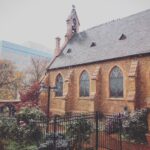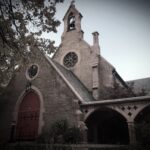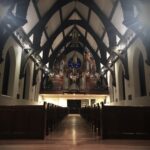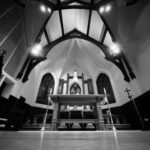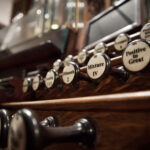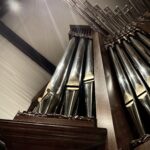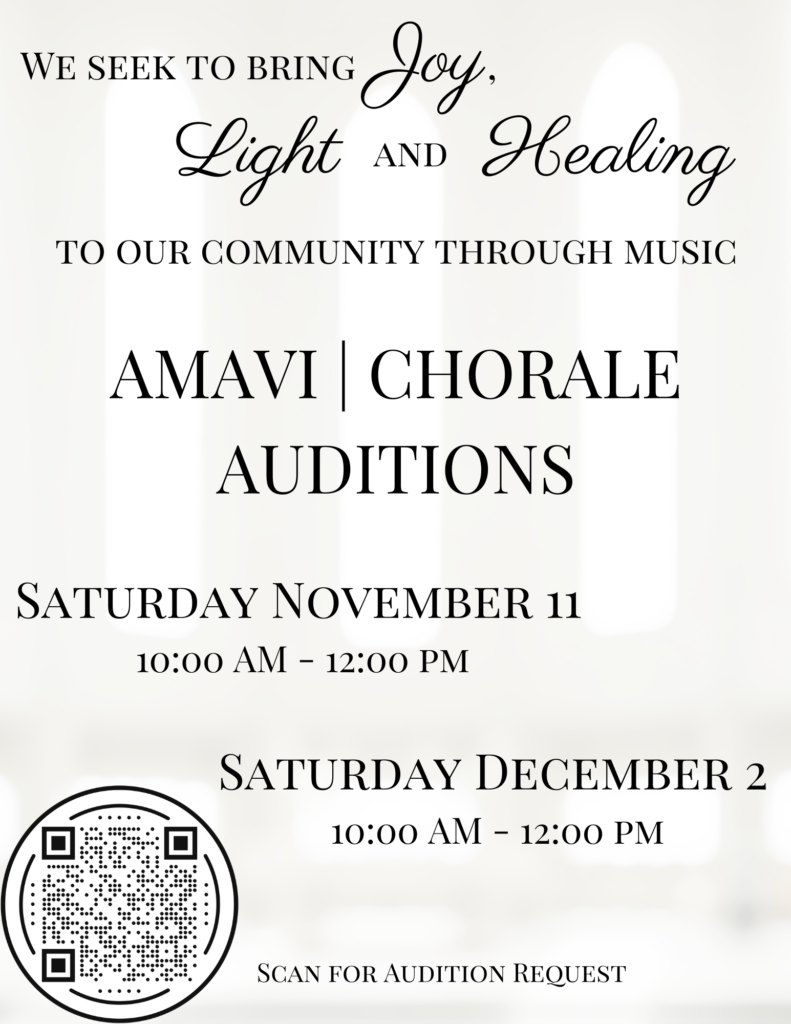Introit
CONCERT PROGRAM
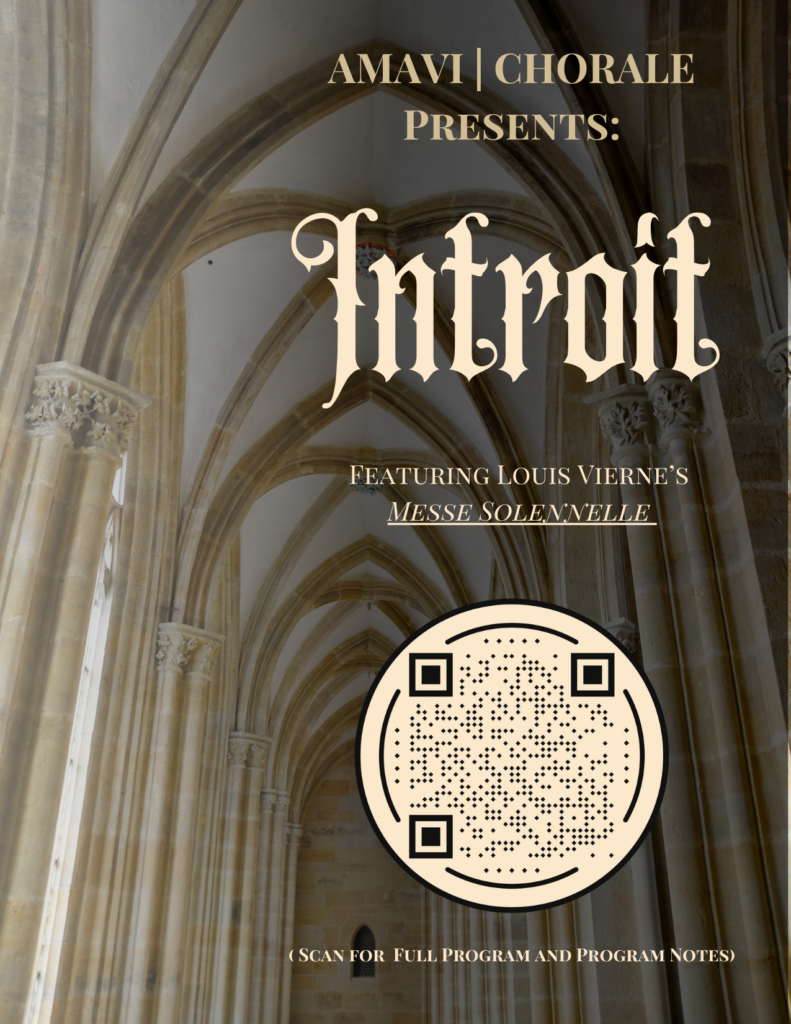
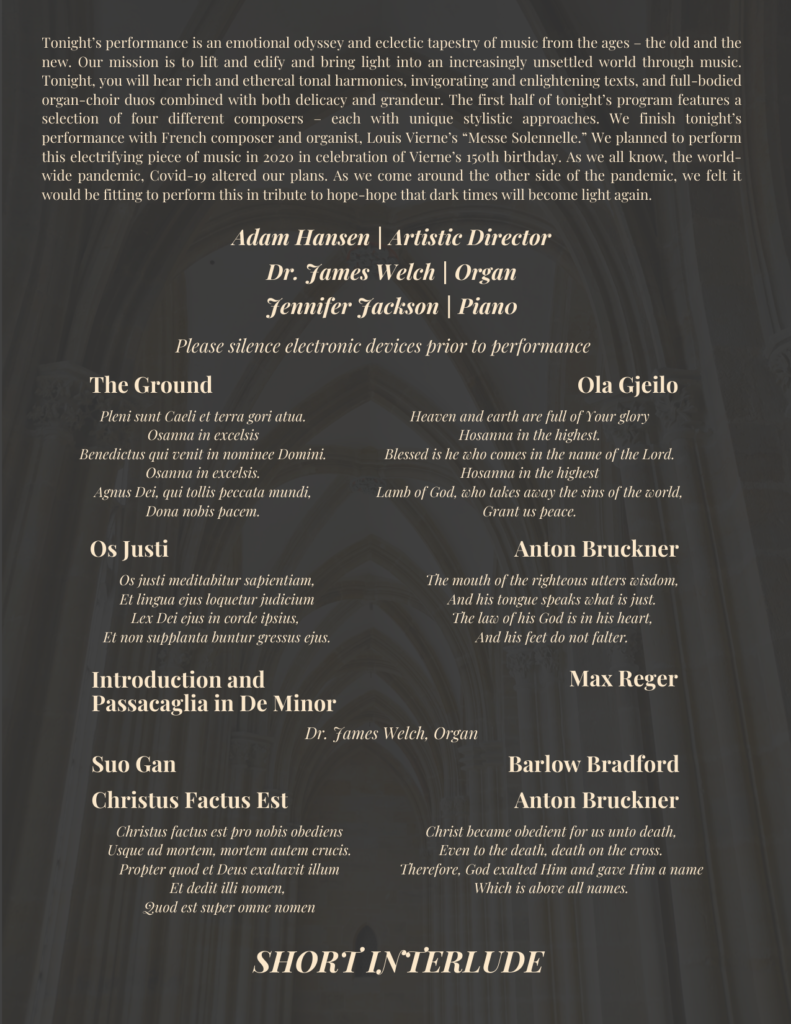
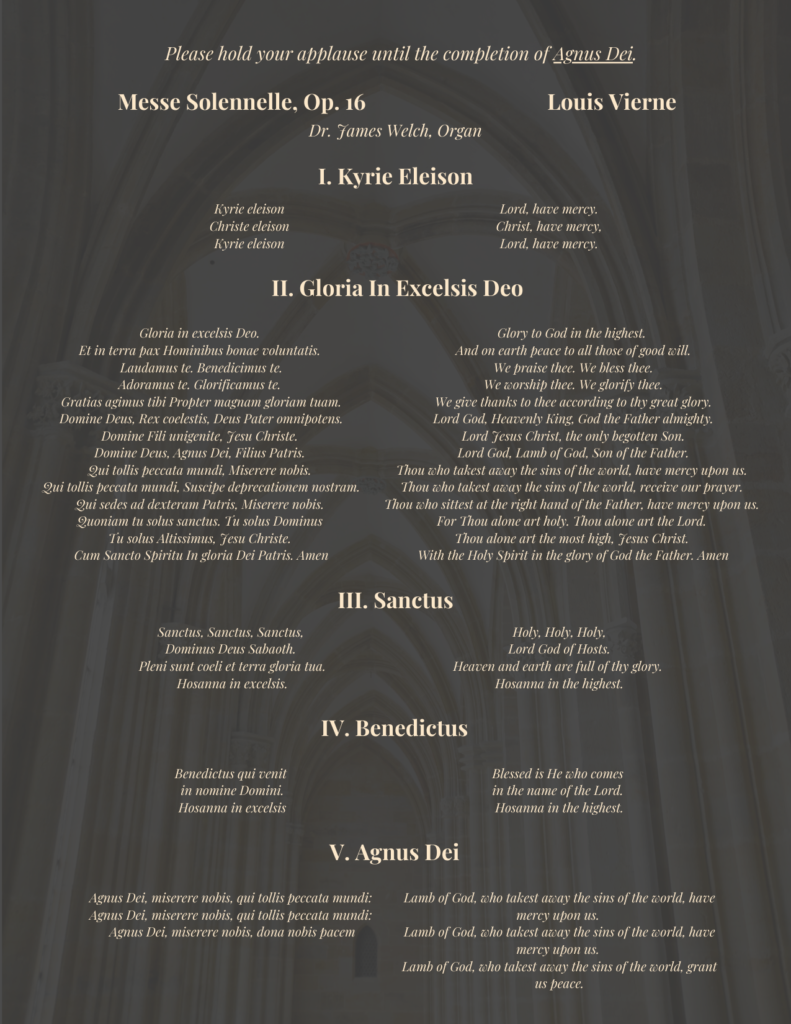
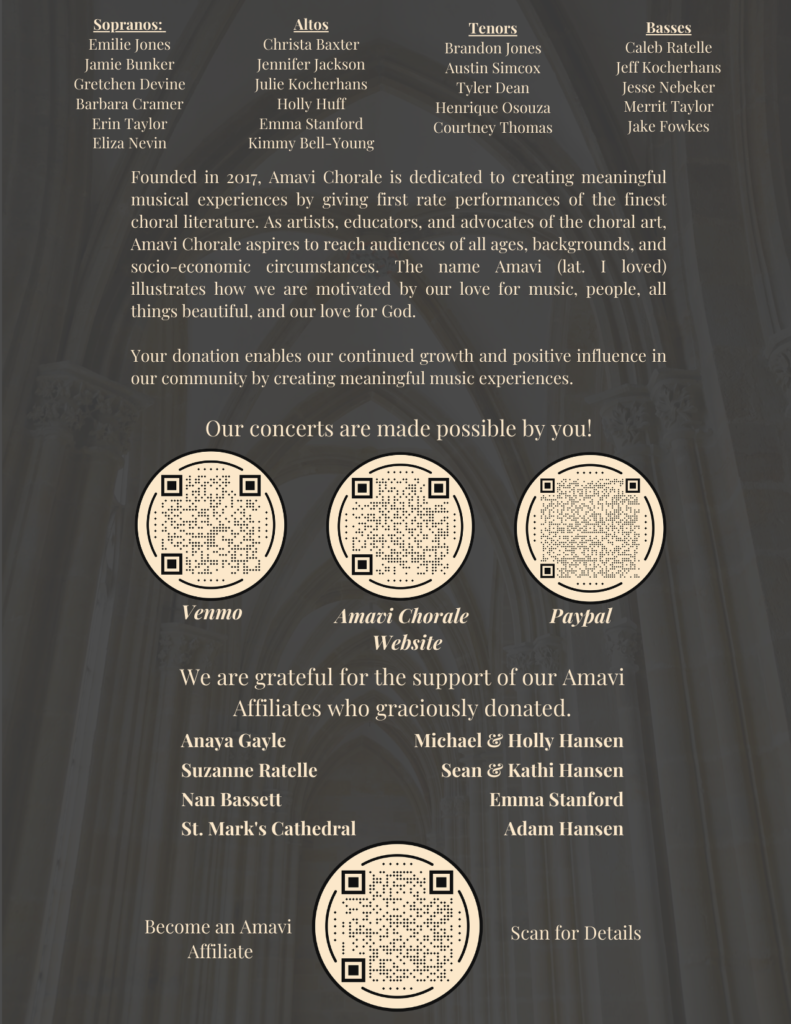
PROGRAM NOTES
Introduction and Passacaglia in D Minor
This year marks the 150th anniversary of the birth of Max Reger. German Romanticism in organ music reached a high point in the works of Reger, who employed traditional forms such as toccata, trio, chorale fantasia, fugue, and the passacaglia; it is the latter form on which this piece is largely based. With this composition Reger is certainly paying homage to Bach’s famous Passacaglia and Fugue in c minor. Throughout the work Reger’s harmonic language is typically chromatic and dense. After a fiery introduction, Reger presents the eight-measure passacaglia theme in the pedals. This becomes the basis for 12 variations which are built over this theme, each in increasing dynamic level and contrapuntal complexity.
Louis Vierne (1870-1937)
Born ‘legally blind’ in Poitiers, France, Louis Vierne demonstrated his musical gifts by the time he was two. Suffering from congenital cataracts, the boy had limited sight. When he was two, he heard a piano for the first time as a pianist played a Schubert lullaby for him. He immediately was able to repeat the notes on the piano. When he was six, he had an operation that helped to restore some sight, so that he could recognize people, see items a short distance away, and read large print
materials if they were close by. At this same time, he began studying solfège and piano.
In 1880, the Vierne family moved to Paris. In 1881, young Louis enrolled as a boarding student at the National Institute for Blind Children, where he studied solfège, harmony, piano, and violin. He remained at the school until 1888. The great composer, César Franck, often judged competitions at the school and noticed the talented youth. He suggested that Vierne study the organ, and in 1886, Vierne began organ studies with Louis Lebel. That same year, Vierne’s father, a journalist, died and the 16-year-old Louis became the head of the family.
Vierne began private harmony studies with César Franck in 1888, as well as attending Franck’s organ class at the Paris Conservatoire. In late 1890/early 1891, he became a full-time student at the Conservatoire, studying organ with Franck. Franck died in November 1891, and was succeeded by Charles-Marie Widor, another major composer/organist. Vierne studied organ with Widor between 1890 and 1893, as well as serving as Widor’s assistant/substitute at the famous church of St. Sulpice. In addition, he taught the auditors in Widor’s Conservatoire class. In 1894, he won a prize for his original playing. Recognizing Vierne’s talent, Widor encouraged him
to compose.
Alexander Guilmant succeeded Widor as Professor of Organ in 1896, and Vierne continued as a teaching assistant in the organ class. His students included many of the next generation of talented French organists, such as Joseph Bonnet, Henri Mulet, Marcel Dupré, Maurice Duruflé, and Nadia Boulenger. He was loved and admired by his students.
Vierne continued to compose as he studied and taught. He married in 1898, but the marriage was unsuccessful and was annulled in 1908. In 1898, he began work on his First Organ Symphony, as well as the Messe Solennelle that we perform today. The Messe Solennelle was completed in 1900 and premiered at St. Sulpice in 1901. In May 1900, Vierne won a competition over 500 other organists to become the titular organist of Notre Dame Cathedral in Paris. E. Alan Meece notes, “He was chosen unanimously by the review committee, doubtless not only because of his auditions and his resume as a top student and virtuoso performer, but because his standing as a brilliant composer had already been well assured by his First Symphony, completed the previous year. In those days, after all, an organist was expected not only to perform well, but to be skilled in improvisation and composition…” Vierne’s appointment as titular organist of Notre Dame was an immense honor. He was the first organist given that title since the 17th-century organist, Louis-Claude Daquin (1694-1772). The titular organist was the most important musical member of the Cathedral staff. A separate choirmaster and professional organist worked with the Cathedral choir of men and boys. Vierne served in this position from 1900 until his death in 1937.
While serving as organist at Notre Dame, Vierne continued his teaching at the Conservatoire. In addition, he gave concerts and recitals. He, along with Guilmant, was one of the first organists to achieve international recognition as a concert performer.
Alexander Guilmant died in 1911. Vierne had served as an unpaid assistant in the organ class for 19 years, and expected that he would be appointed Professor of Organ at the Conservatoire. Instead, Conservatoire officials appointed Eugène Gigout, another prominent French composer/organist, to the position. Vierne was both saddened and embittered by this action. Conservatoire officials by-passed him again in 1926, when they appointed his former student, Marcel Dupré, to the position. Vierne stopped teaching at the Conservatoire in 1911, accepting a position at the Schola Cantorum from 1912 to 1937. He also taught at the Ecole César Franck from 1931 to 1937.
Accidents, illness, and personal tragedy took their tolls on him. He lost his brother, Rene (also a composer/organist) in 1916 as a result of World War I. Many of his students died in that war, as well as his son, Jacques. Glaucoma deteriorated his fragile eyesight and he became blind once again. He injured his leg severely in an accident and took a year to re-learn his pedal technique.
Vierne gave brief concert tours in England in 1924 and 1925, and spent three months on a 1927 tour of the United States. He died on June 2, 1937 at the console of the Notre Dame Cathedral organ, as he was giving his 1750th organ recital. He completed the main concert, which members of the audience said showed him at his full powers (“as well as he has ever played”), playing his “Stèle pour un enfant défunt” from his Triptyque, Op. 58. The closing section was to be two improvisations on submitted themes. He read the first theme in Braille, then selected the stops he would use for the improvisation. He suddenly pitched forward, and fell off the bench as his foot hit the low “E” pedal of the organ. He lost consciousness as the single note echoed throughout the church. He had thus fulfilled his oft-stated lifelong dream — to die at the console of the great organ of Notre-Dame. Maurice Duruflé, another major French organist and composer, was at his side at the time of his death.
Louis Vierne composed in several different genres, but is most widely known for his solo organ compositions, especially his six organ symphonies. In addition, he composed works for orchestra, chamber music, choral works, works for solo voice, songs, and works for piano. His organ works are dramatic, passionate, and Romantic in style and mood. His musical achievements were enhanced by the development of the symphonic organ created by the great French organ builder, Aristide Cavaillé-Coll (1811-1899). Cavaillé-Coll built or refurbished many major organs in Paris, including the ones at St. Sulpice and Notre Dame. Such organs have very different sounds from those used in Bach’s or Mozart’s time.
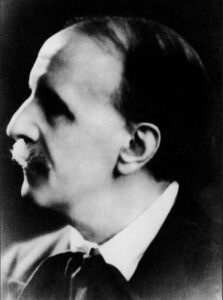
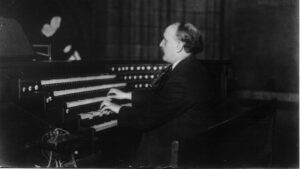
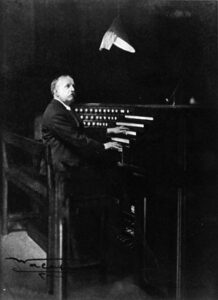
Messe Solennelle
Composed between 1898 and 1900, the Messe Solennelle received its premiere in 1901 on the majestic Cavaillé-Coll organ at St. Sulpice. The work is dedicated to French composer/organist Théodore Dubois. Vierne and his mentor, Widor, played in the first performance. The Mass was originally composed for two organs. We perform a 1979 edition arranged for one organ. There is no Credo movement.
The Messe Solennelle is a work of depth, feeling, and continuous forward motion. Kyrie Eleison, the first movement, is divided into three sections. The work begins with a forceful organ introduction that softens as the chorus enters, voice by voice. Vierne makes great use of chromatic passages and dynamic shadings in the two iterations of the Kyrie. The inner Christe section is more calm and gentle.
The Gloria is the most complex section of the Mass, with a variety of rhythms, textures, and moods. The initial Gloria is energetic, passionate, driven. There are dialogues between chorus 6 and organ. The mood changes at the Domine Deus, where each choral section sings a solo line, accompanied with a calm, ‘rocking’ organ accompaniment. The entire chorus enters again at the Qui tollis, in quiet, but clashing chords. Once again there is a dialogue between the chorus and the organ, with shaded variations in dynamics. The Qui sedes begins an intensely chromatic buildup to a return of the Gloria melody at the Quoniam tu solus sanctus. The movement ends with great energy.
The Sanctus expresses the same peaceful calmness of the Domine Deus, with voices entering one by one and coming together at the unison Pleni sunt coeli. The short Hosanna is intense, deliberate, and passionate. The Benedictus resumes the dialogue between singers and organ, with soft, chantlike utterances by the singers, interspersed with lyrical passages by the organ. The Hosanna is repeated with joyous intensity. The Mass closes with a quietly reverent Agnus Dei, as the chorus and organ complete their dialogue.
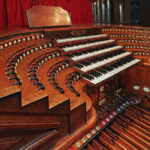
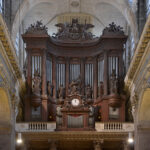
Louis Vierne and Messe Solennelle biographies written by Helene Whitson and used with permission. Bibliography can be found HERE
OUR ARTISTS
Dr. James Welch, Organ
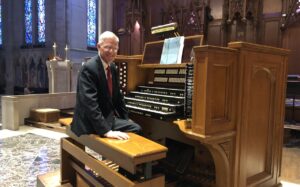
James Welch received the Doctor of Musical Arts degree in organ performance from Stanford University, where he studied under Herbert Nanney and served as Assistant University Organist. Further studies have been with John Walker; Alexander Schreiner; Josef Doppelbauer of the Mozarteum Akademie, Salzburg, Austria; and Jean Langlais, Basilique Ste. Clotilde, Paris, France. He has concertized internationally, with performances in such prestigious venues as Notre Dame Cathedral in Paris, the Leipzig Gewandhaus, National Cathedral in Washington, D.C., and the Tabernacle at Temple Square in Salt Lake City. He has also performed and taught in Beijing, Taipei, Hong Kong, New Zealand, and Jerusalem. A specialist in Latin American organ music, he received a Fulbright award to perform and conduct research on historic 19th-century Cavaillé-Coll organs in Brazil; since then he has performed in Mexico and edited three volumes of organ music by contemporary Mexican composers. He holds the Associate Certificate of the American Guild of Organists, and he has performed at conventions of the Guild and at the International Congress of Organists. He is the author of biographies of two prominent California organists: Dale Wood: The Man and the Music, and Richard Purvis, Organist of Grace. Other articles have appeared in The American Organist and The Diapason, and he has released numerous CDs, recorded on a variety of organs in the United States and Europe. Many of his recorded performances have been aired on American Public Media’s “Pipedreams” program. His travels, studies, and performances on historical and modern instruments throughout the world have given him a sure command of many styles of music. Critics in this country and abroad have praised him for his technical facility, solid musicianship, and creative programming. He taught on the music faculties of the University of California, Santa Barbara, and Santa Clara University. He currently lives in Provo, Utah, where he continues his teaching and performing. He and his wife Deanne are the parents of two sons, Nicholas and Jameson.
As a member of The Church of Jesus Christ of Latter-day Saints, James Welch has been very active in the Church’s music program. He has served as ward organist and stake music chairman, and he has arranged for and accompanied numerous musical events. He is the composer of a hymn in the Church’s hymnal (“Bless Our Fast, We Pray,” No. 138), which he co-wrote with John S. Tanner, his first missionary companion. He has since returned to Brazil several times for concerts and master classes. He performs regularly as a guest recitalist at the Tabernacle on Temple Square in Salt Lake City, and he has taught at the Church Music Workshop held at Brigham Young University. He conducts workshops and performances in stakes throughout the United States and abroad. From 2016-2020 he was bishop of the Stanford YSA Ward. From 2022 to 2023 he was the resident organist at the BYU Jerusalem Center, and his wife Deanne directed the choirs.
View past performances on James Welch’s YouTube channel: CLICK HERE
Jennifer Jackson, Piano
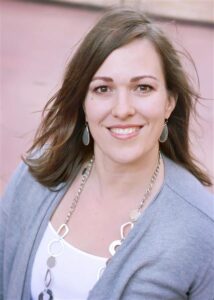
Jennifer graduated from the University of Utah with her Bachelor’s degree in Piano Performance in the year 2000. She has been teaching piano since 1995 after beginning her own piano studies at the age of eight. In addition to the piano, Jennifer has developed a love of the organ and has performed on many organs in the Salt Lake area. Teaching the piano and the organ brings her great joy. Jennifer says. “It is so rewarding to see the progress of each student. I’m grateful I have the opportunity to instill in others the love I have for these beautiful instruments!”
A Very Special Thanks…
We’d like to take a moment to thank the Clergy, Staff, and Congregation of St. Mark’s Episcopal Cathedral for the generous use of their beautiful Cathedral and the hospitality they have shown us. Thank you!
